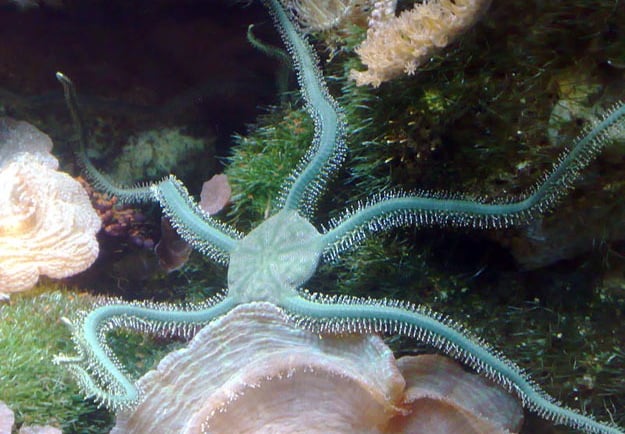The Reproductive Process of Brittle Stars: A Closer Look at Green Egg Release


Introduction to Brittle Stars
Brittle stars, belonging to the class Ophiuroidea, are remarkable echinoderms known for their distinctively flexible arms and intriguing behaviors. These marine creatures play essential roles in their ecosystems, often scouring the ocean floor for detritus and other organic materials. In addition to their ecological importance, brittle stars exhibit unique methods of reproduction, particularly notable is their fascinating practice of releasing green eggs for fertilization.
The Reproductive Mechanism
The reproduction process in brittle stars generally involves both sexual and asexual methods, depending on environmental conditions and species. When conditions are right, brittle stars engage in a spectacular spawning event where males and females simultaneously release their gametes into the surrounding waters. Typically, it is during warmer months that this phenomenon occurs, aligning with the increase in food availability and optimal conditions for larval survival.
During this spawning event, female brittle stars expel their green eggs into the open expanse of the ocean. The vibrant color of these eggs is not only visually striking but also potentially functions in attracting males to ensure successful fertilization. Once released, the eggs drift through the water, ripe for fertilization, as sperm from males is likewise emitted into the environment. This simultaneous release maximizes the chances of fertilization in the ocean's vast waters.
The Lifecycle Post-Fertilization
After the successful fertilization of the green eggs, they undergo a series of developmental stages. Initially, the fertilized eggs develop into free-swimming larvae. These larvae are often referred to as fertilization offspring and play a crucial role in the dispersal of brittle stars, enabling their populations to expand over considerable distances.
As the larvae grow, they undergo metamorphosis, eventually settling onto the ocean floor and developing into juvenile brittle stars. This stage marks the transition from a free-living larval stage to a settled adult life, beginning the lifecycle anew. This strategy of releasing green eggs and having a free-swimming larval stage contributes significantly to the genetic diversity and resilience of brittle star populations.
Conclusion: The Importance of Green Egg Release in Ecosystems
The reproduction through the release of green eggs not only highlights the intricate biological processes of brittle stars but also emphasizes their ecological significance. By efficiently employing both external fertilization and a dispersive larval stage, brittle stars contribute to maintaining vibrant marine ecosystems. Understanding such behaviors is crucial, especially as environmental changes continue to impact marine life.
In summary, the fascinating reproductive strategy involving green egg release in brittle stars showcases nature's adaptability and ingenuity. Observing these events reinforces the importance of preserving marine habitats to support such intricate life cycles and the overall health of our oceans.
